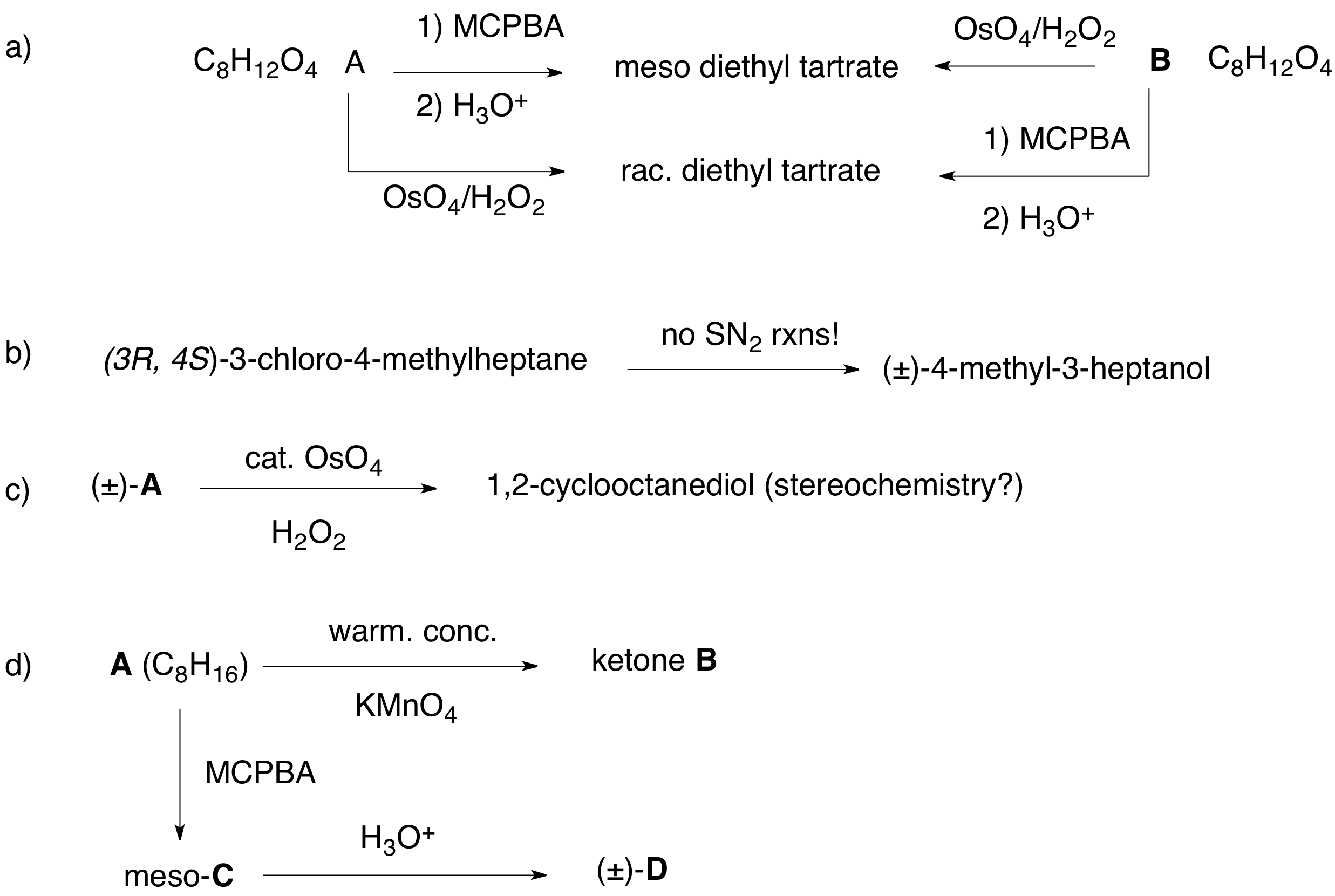In 1840, Christian
Friedrich Schönbein (1799-1868) discovered ozone (Gr.; odorant), the sharp
odor produced by electrical discharges. Seven years later
(1847) he observed that ozone oxidizes organic compounds
but not to their ultimate products of oxidation, carbon
dioxide and water. [Two years prior, he had spilled
nitric and sulfuric acid on his Frau's apron in her
kitchen. The apron, made of cotton, combusted and thus
was discovered gun cotton, nitrocellulose. Schönbein
also observed that hydrogen peroxide (Threnard; 1818) is
oxidized to oxygen gas in the presence of hemoglobin.
] In the period 1903-1916, Carl
Dietrich Harries (1866-1923),
an assistant to both Hofmann (of the eponymous
elimination and rearrangement) and Fischer (of projection
and carbohydrate fame) at Berlin, published some 80
papers on the reactions of ozone with organic compounds.
His interest was stimulated by the reaction of ozone with
rubber, a process that causes rubber to become hard and
brittle. These studies led to the analytical and
synthetic uses of ozone. From 1904-1916 he was a
professor at Kiel. Disenchanted with academic life, he
became Director of Research for Siemens and Halske, the
German company co-founded by the electrical pioneer,
Werner von Siemens, his father-in-law. Not surprisingly,
Siemens went into the business of producing ozone
generators. The studies of Rudolf
Criegee (1902-1975; Karlsruhe)
produced a unified mechanism for the process
of ozonolysis. Carl Dietrich Harries (1866-1923)

Reading assignments:
a)The alkene module in ORGO.b) Ozonolysis module.
How do I approach solving problems like 3 and 4? Here is a step-by-step analysis of a typical problem.
|
1. Provide the missing information in each of the following problems: reagents or unknown structures. Explain your reasoning.
|
2. Consider the four alkene stereoisomers A-D shown on the right. a) Which ones are optically active? Which ones are not? Explain. b) What is the product of ozonolysis of each stereoisomer? Be specific! To what degree are the alkenes distinguishable from one another as a result of the ozonolysis? The following facts are true for A-D upon reaction with chlorine. One alkene affords a racemic dichloride. One other alkene forms a single optically-active dichloride. A third alkene forms two optically active dichlorides while the fourth alkene provides two optically inactive dichlorides. c) Which alkene forms which dichloride? Explain. [Hint: It is not necessary to draw the structures out. You can use R,S-notation for each of the four stereocenters in the dichlorides derived from A-D.] |
 |
|
3. Optically active monoterpene A reacts with 2 molar equivalents of hydrogen to produce diastereomeric, disubstituted cyclohexanes B and C, both of which are optically inactive. Compound B has a smaller heat of combustion than C. Ozonolysis and dimethyl sulfide reduction of A affords the compound on the right as a reaction product as its (R)-enantiomer [Hint: Count carbons]. What are the structures A-C? Explain and illustrate. |

|
|
4. Compound A,
C7H12, [Degree
of Unsaturation?] affords
a
single
ketoaldehyde B upon ozonolysis and dimethyl
sulfide reduction. Hydrogenation of A gives
methylcyclohexane. Treatment of A with HBr in the
presence of
peroxide
gives two stereoisomeric bromides, C and D.
Compound C reacts with
C2H5ONa/C2H5OH
to give E while under the same conditions,
compound D gives mainly A and some of
compound E. Ozonolysis of E gives a single
dialdehyde F. What are the structures of
A-F? Explain and illustrate. Pay attention to
stereochemistry. |
